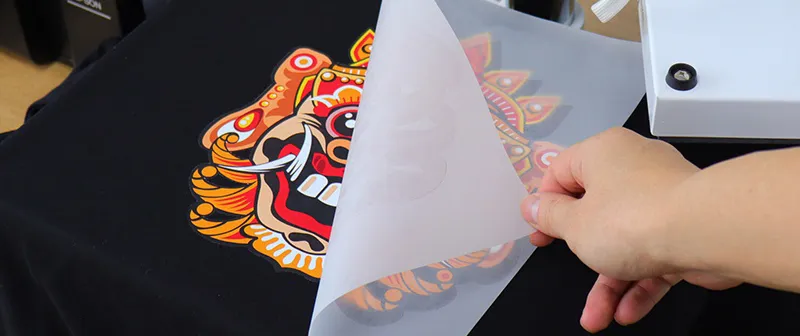The Future of Fashion: Discovering DTF Printing Technology in the Textile Sector
Amongst these developments, Direct to Movie (DTF) printing innovation has arised as an encouraging competitor, supplying special abilities and possibilities for designers and manufacturers alike. This advanced printing approach has actually triggered passion due to its possible to transform conventional textile printing processes.
Evolution of Textile Printing
From the ancient worlds utilizing methods like block printing to the electronic revolution of today, fabric printing has continually pushed boundaries. As the craft spread to other components of the world, brand-new methods such as screen printing and roller printing emerged during the Industrial Change, transforming the fabric sector.
In the 20th century, improvements in technology resulted in the development of rotating screen printing, allowing for faster and more detailed layouts. The introduction of electronic fabric printing in the late 20th century marked a considerable change towards more sustainable and functional printing approaches. Today, with developments like Direct-to-Fabric (DTF) printing modern technology, developers can create vibrant, thorough prints with greater performance and decreased ecological effect. The development of textile printing showcases an abundant background of creativity, ingenuity, and technological progression on the planet of style and layout.
Benefits of DTF Innovation
With the advancement of fabric printing methods from old techniques like block printing to modern-day innovations such as electronic printing, the introduction of Direct-to-Fabric (DTF) innovation has actually considerably enhanced the effectiveness and sustainability of fabric printing procedures. Among the main advantages of DTF innovation is its capacity to straight publish styles onto fabric without the demand for transfer documents, which minimizes waste and simplifies the production process. Additionally, DTF printing permits for higher shade vibrancy and information accuracy contrasted to typical methods, allowing fabric makers to produce intricate and top quality designs easily.
Moreover, DTF modern technology is known for its adaptability, as it can be made use of on different sorts of fabrics, including natural fibers like silk, cotton, and woollen, in addition to synthetic materials such as polyester and nylon (DTF Printing). This flexibility opens a vast array of possibilities for developers and makers to try out different structures and products, causing even more one-of-a-kind and innovative items in the fashion business. On the whole, the implementation of DTF technology stands for a considerable improvement in fabric printing, using many benefits that add to the future sustainability and creative thinking of the market
Sustainability in Style Manufacturing
Highlighting eco-friendly techniques is paramount in contemporary style production, lining up with the expanding customer demand for sustainable products. Over the last few years, the fashion business has encountered increasing scrutiny due to its considerable ecological influence, including too much water usage, chemical air pollution, and fabric waste. As a reaction, many style brands are currently incorporating lasting techniques into their production processes to minimize harm click to find out more to the setting.
Sustainability in fashion production includes various facets, such as utilizing recycled and natural products, reducing power usage, executing ethical labor practices, and advertising transparency throughout the supply chain. In addition, developments in technology, like DTF printing, deal possibilities to better boost sustainability in fabric manufacturing. This modern technology makes it possible for accurate printing on materials, minimizing ink wastage and water usage compared to standard printing methods.
Design Flexibility and Customization

Additionally, DTF printing promotes personalization on a range previously unattainable, permitting individualized clothes and special pieces customized to individual preferences. Customers can currently proactively join the layout procedure, developing garments that show their style and character. This customization not just boosts the consumer experience however additionally promotes a feeling of exclusivity and individuality in a market filled with mass-produced apparel. On the whole, DTF printing technology revolutionizes the design landscape in the textile sector, supplying endless opportunities for innovative expression and customized fashion.
Influence On Supply Chain & Market Trends
DTF printing innovation in the fabric industry is improving supply chain characteristics and influencing market fads through its performance and modification abilities. By making it possible for on-demand printing and eliminating the need for huge supplies, DTF technology enhances the supply chain process.
In addition, the customization possibility of DTF printing technology is reinventing the market trends in the fabric market. As an outcome, DTF modern technology is driving a shift in the direction of even more ingenious and customer-centric approaches within the textile industry, forming the future of style.

Conclusion
Finally, DTF printing technology is changing the textile industry by providing various benefits such as style freedom, customization, and Check This Out sustainability. This innovative modern technology is reshaping the future of fashion manufacturing, affecting supply chains, and driving market fads towards much more green and efficient methods. As the sector remains to advance, DTF printing will play an essential duty in forming the method textiles are generated and consumed in the years to find.
From the old human beings utilizing methods pop over here like block printing to the digital transformation of today, fabric printing has continually pressed borders. As the craft spread to various other components of the world, new methods such as display printing and roller printing emerged throughout the Industrial Transformation, reinventing the textile sector.
The intro of digital fabric printing in the late 20th century marked a significant shift in the direction of even more flexible and lasting printing techniques.With the evolution of fabric printing methods from ancient techniques like block printing to modern advancements such as digital printing, the intro of Direct-to-Fabric (DTF) modern technology has actually considerably improved the effectiveness and sustainability of fabric printing procedures (DTF Printing).In response to the critical change towards sustainability in style manufacturing, the fostering of innovative technologies like DTF printing not just addresses ecological issues however additionally opens up methods for unequaled style flexibility and modification in the fabric sector